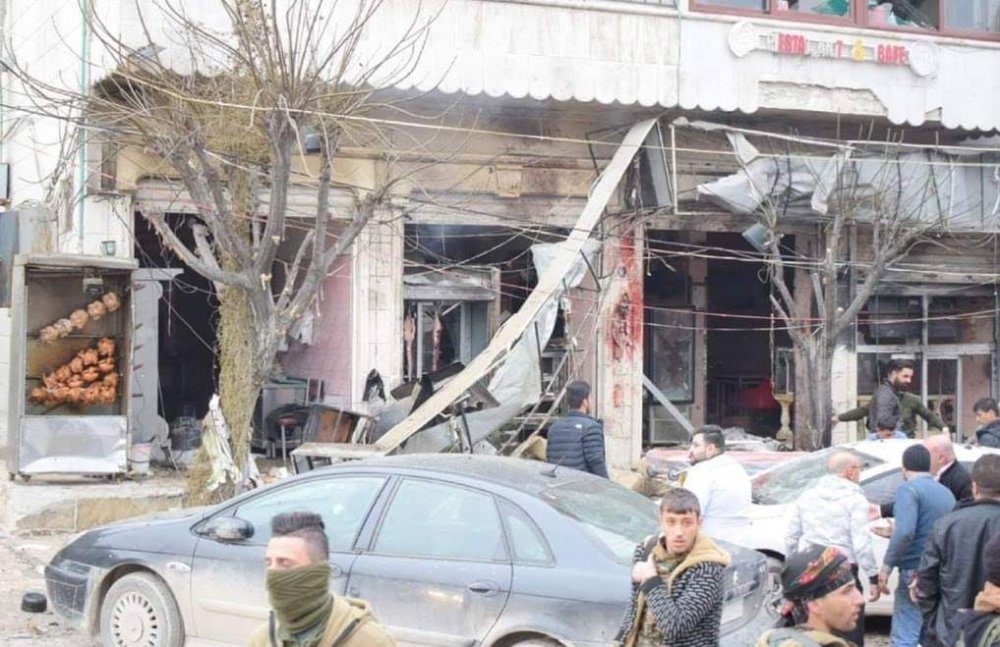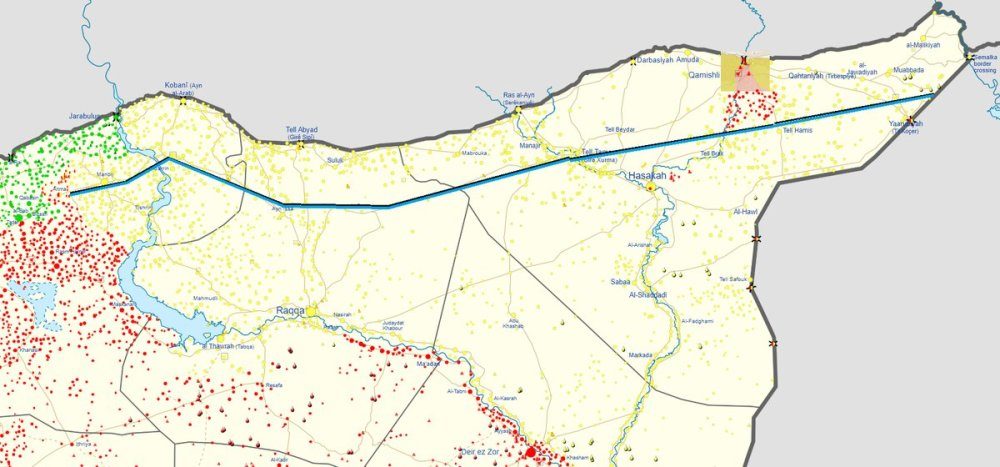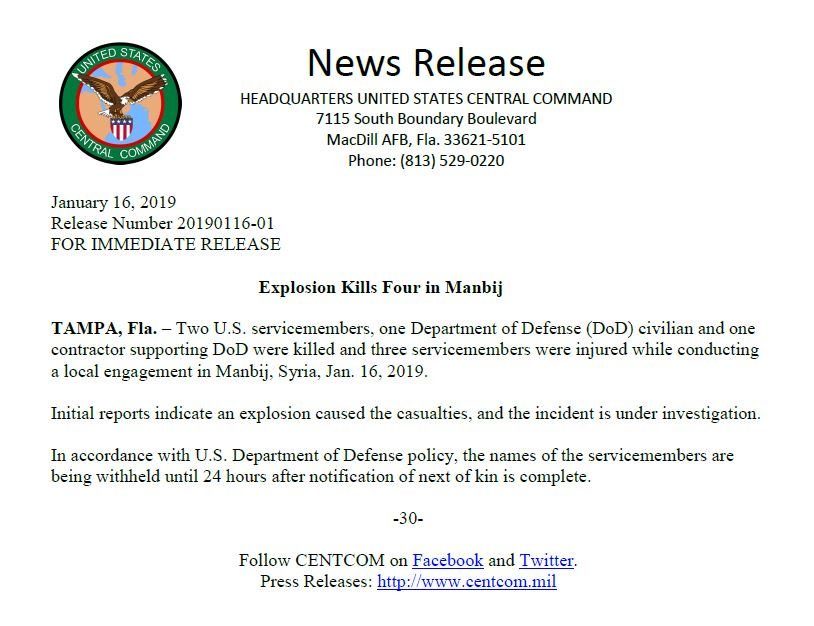All these contradictory announcements have come from the White House in the last month or so, indicating some combination of the current occupant of the White House's lack of experience in foreign policy, or lack of control of his own administration. Nobody in the Middle East believes Trump. Only President Erdogan confirmed the serious intention of the US to withdraw from Syria but was knocked down by Trump's threat to "cripple the Turkish economy if Turkey attacks the Kurds". But soon after Trump's threat to Erdogan, he again changed his mind and suddenly announced a new plan for a buffer zone "to protect the Kurds", Turkey's worse enemies in the Levant. Trump is signaling a high degree of confusion about his intention to stay or leave Syria.
It doesn't matter if the world doesn't understand what Trump's plan is. There is no point in trying to analyse and predict the next step because Trump himself doesn't seem to know what to do next. He wakes up with one decision and seems to change it hours later or the following day.
Nevertheless, Trump's continuously changing plans are not preventing his adversary the Iranian General Qassem Soleimani - the head of the Iranian Revolutionary Guard Corps in the al Quds Brigade responsible for supporting all movements of the oppressed peoples in the world, mainly the Lebanese Hezbollah, Iraqi, Palestinian and Afghan groups, but others as well - from making plans to counter Trump in Syria and Iraq.
Well informed sources say "Soleimani is holding meetings with various of his allies' groups in the Middle East to stand against US forces and push them away from Iraq and Syria". According to these sources, neither Iran nor Russia believe in Trump's declared intention to withdraw and both are convinced that at least some US forces will remain in the Levant. Soleimani is planning to move more aggressively with his allies once the last ISIS stronghold east of the Euphrates is reconquered. ISIS maintains an area of around 15 sqkm with several villages on the Euphrates and is currently under attack by Kurdish forces supported by the coalition.
President Bashar al-Assad agreed with the Iraqi National Security Advisor Faleh al-Fayyad to reactivate coordination of tribal groups in northeast Syria with Iraqi forces. "Assad gave the green light to Iraq to coordinate with the Arab tribes in Syria and to push Iraqi security forces into Syria when and if needed to end ISIS control if the US is not willing to finishing the job quickly".
Such an arrangement has potential disadvantages Syria and Iraq are aware of. The US forces occupying Northeast Syria could attack Iraqi-Syrian forces attacking ISIS controlled areas as they did in the past. Last year, Israeli jets bombed the Hashd al-Shaabi command and control headquarters on the borders with Syria and US jets twice destroyed Syrian forces trying to attack ISIS, one group crossing the Euphrates, and other advancing towards al-Tanf.
"If and when the US attack Iraqi forces, such an act of aggression will put pressure on the Iraqi government to ask for the total withdrawal of the US forces from Iraq. If this doesn't happen, another source of leverage will be to make sure US forces in Iraq are under continuous threat. There are many groups in Mesopotamia unfriendly to the US, determined to see their country free from any foreign troops, particularly the US forces, considered the source of all the troubles the Middle East suffers from", say the sources.
Thus, the "Axis of the Resistance" is planning to face down US hegemony in the Levant and Mesopotamia. Iraq and Syria are not friends of Washington and will never act like the Gulf monarchies propped up by US protection. If the US establishment decides to stay in Syria and continue its occupation of the country or establish a "buffer zone", the cards will be reshuffled again.
If this happens, Turkey, considered to date a friend of Russia, may become an enemy by occupying northeast Syria and deploying forces in the buffer zone suggested by Trump. If and when Turkey does that, it will pass into the hostile camp by opposing Russia's plan to protect the integrity of Syria. Such an accommodation with the US might help Turkey fulfill its dream of occupying part of Syria. In this case, Turkey will be considered an enemy and will suffer attacks from the Syrians, supported by Damascus. Local Arab tribes and Kurds will be armed, enough to defend themselves and to counter attack Turkish forces or their allies in al-Hasaka.
The Kurds and Damascus will then have the same objective, i.e. the return of northeast Syria to Syrian army control rather than subject to Turkish control or a US-Turkish understanding. And Iran will fight the US through its allies in the Middle East, including Iraq. What is unclear is why the Syrian Democratic Front (SDF - Led by Kurds) announced its readiness to support the creation of a safe-zone, a zone Turkey is gathering for it over 80,000 men and is hoping to control around 420 km wide and 32 km deep (bigger than the seize of Lebanon) in Kurdish controlled provinces of Raqqa and al-Hasaka.
The US establishment has asked the Iranians to mediate with the Taliban to spare US forces from lethal attacks. The US establishment also asked Iran to refrain from attacking its troops in Iraq. Assent to these requests will be forthcoming if the US responds to one important request from Iran: total withdrawal from Syria. If Trump cannot do it, the US president may be sweating through a hot summer this year.
About the Author
Veteran War Zone Correspondent and Senior Political Risk Analyst with over 35 years' experience covering the Middle East and acquiring in-depth experience, robust contacts and political knowledge in Iran, Iraq, Lebanon, Libya, Sudan and Syria. Specialised in terrorism and counter-terrorism, intelligence, political assessments, strategic planning and thorough insight in political networks in the region. Covered on the ground the Israeli invasion to Lebanon (1st war 1982), the Iraq-Iran war, the Lebanese civil war, the Gulf war (1991), the war in the former Yugoslavia (1992-1996), the US invasion to Iraq (2003 to date), the second war in Lebanon (2006), the war in Libya and Syria (2011 to date). Lived for many years in Lebanon, Bosnia, Iraq, Iran, Libya and Syria.






Reader Comments